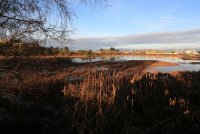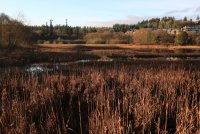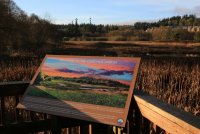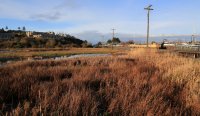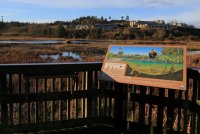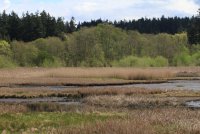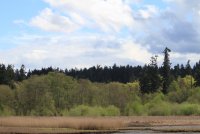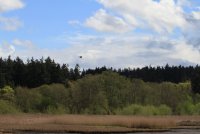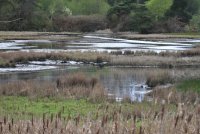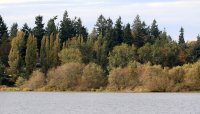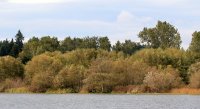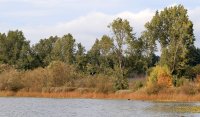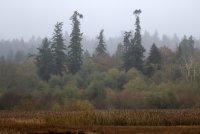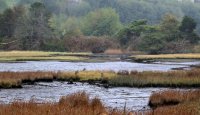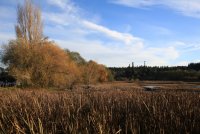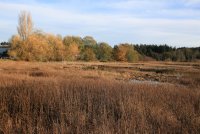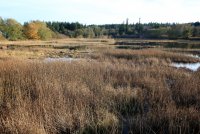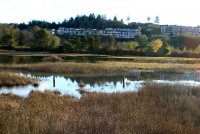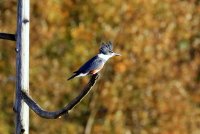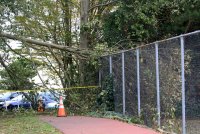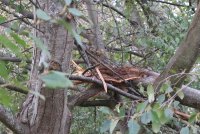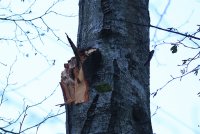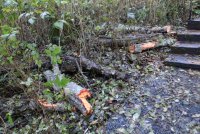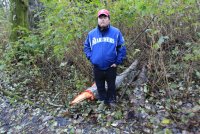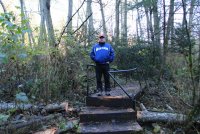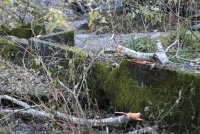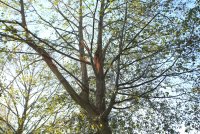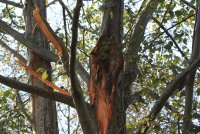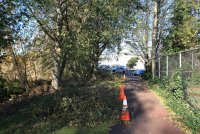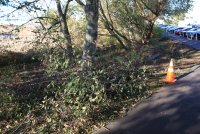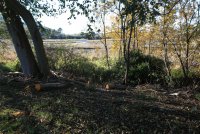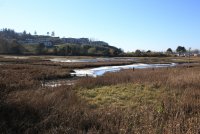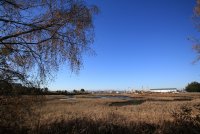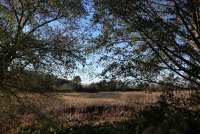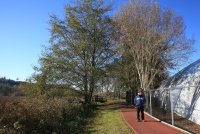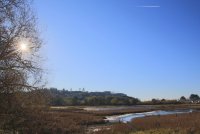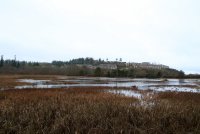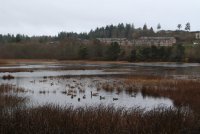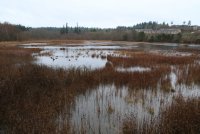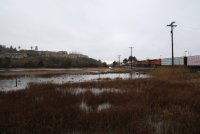Bill, with the FF body, varying the focal distance won't make a real noticeable difference. with that setup, you'll see almost no change in the DoF just by changing where you focus. also, you won't see any appreciable difference between f/16 and f/22, and most lenses are sharpest between about f/8 and f/16. i almost never stop down past f/16 unless i have to to get the exposure i need.
what really affects the overall depth of field is the focal length of the lens. a 17mm lens will give you more than a 35, and by using your 24mm, you'll actually lose about 2 feet on the near end. the overall image may be sharper, if the 24-105 is a sharper lens, but it'll be due to the optics, not the DoF... for your 24mm, here's about what to expect... focused at 30 feet, at f/16, you'll get everything from about 4 feet to infinity. at f/22, you'll move the near distance in about a foot - hardly worth the potential loss of sharpness. focused at 300 feet, you'll see no appreciable change. for that matter, you won't see any really noticeable change focusing anywhere in the marsh... as long as you stay at 24mm, and keep the aperture at f/16, your DoF will be between about 4 feet and infinity. now... if you zoom that 24mm out to, say, 50mm, you'll suddenly see the near limit move out to about 16 feet, and at 100mm, it'll jump out to about 55 feet! clearly, the focal length is the key... for maximum depth of field, use a wide lens!
what really affects the overall depth of field is the focal length of the lens. a 17mm lens will give you more than a 35, and by using your 24mm, you'll actually lose about 2 feet on the near end. the overall image may be sharper, if the 24-105 is a sharper lens, but it'll be due to the optics, not the DoF... for your 24mm, here's about what to expect... focused at 30 feet, at f/16, you'll get everything from about 4 feet to infinity. at f/22, you'll move the near distance in about a foot - hardly worth the potential loss of sharpness. focused at 300 feet, you'll see no appreciable change. for that matter, you won't see any really noticeable change focusing anywhere in the marsh... as long as you stay at 24mm, and keep the aperture at f/16, your DoF will be between about 4 feet and infinity. now... if you zoom that 24mm out to, say, 50mm, you'll suddenly see the near limit move out to about 16 feet, and at 100mm, it'll jump out to about 55 feet! clearly, the focal length is the key... for maximum depth of field, use a wide lens!

